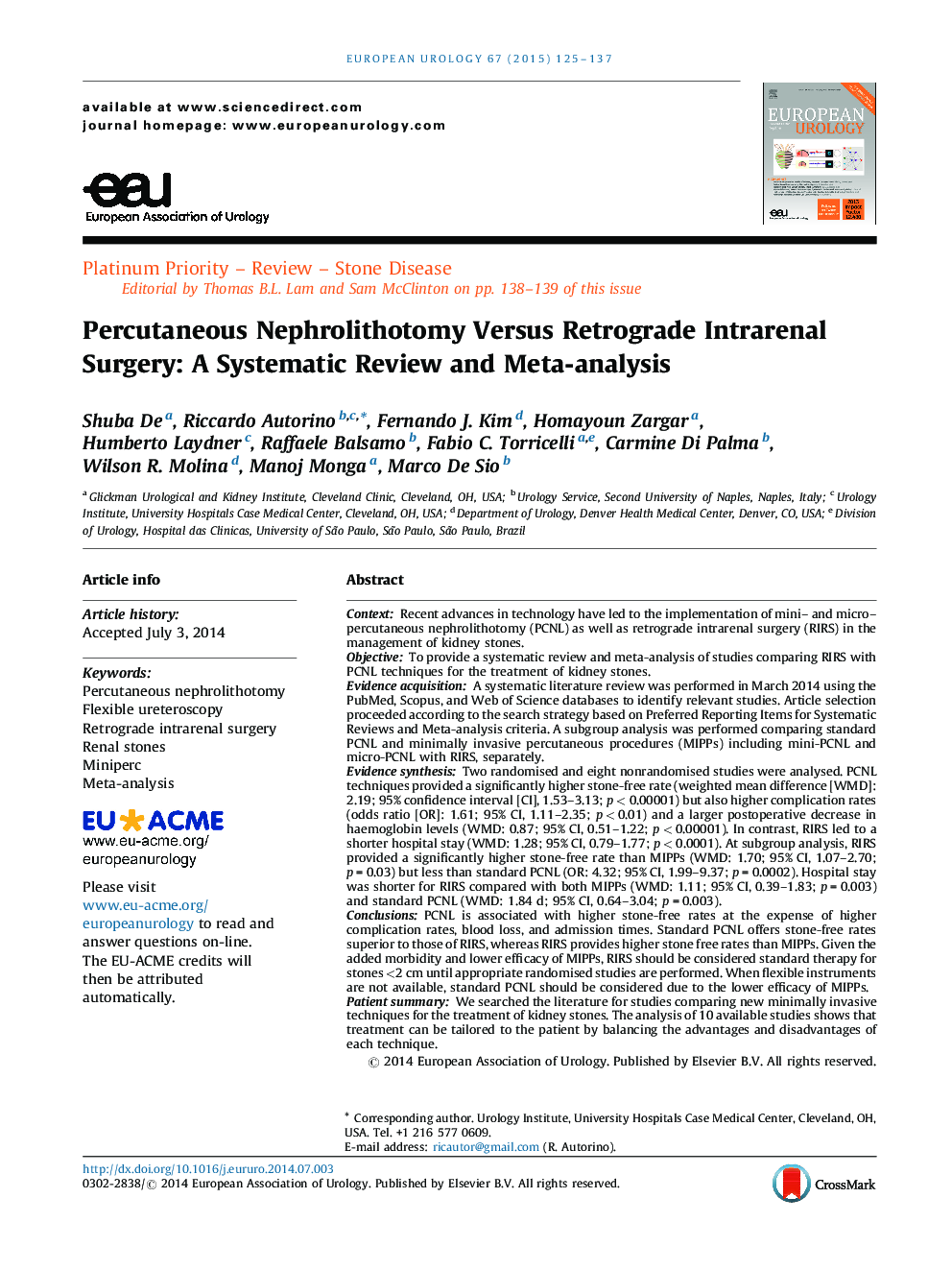| کد مقاله | کد نشریه | سال انتشار | مقاله انگلیسی | نسخه تمام متن |
|---|---|---|---|---|
| 3924539 | 1253106 | 2015 | 13 صفحه PDF | دانلود رایگان |

ContextRecent advances in technology have led to the implementation of mini– and micro–percutaneous nephrolithotomy (PCNL) as well as retrograde intrarenal surgery (RIRS) in the management of kidney stones.ObjectiveTo provide a systematic review and meta-analysis of studies comparing RIRS with PCNL techniques for the treatment of kidney stones.Evidence acquisitionA systematic literature review was performed in March 2014 using the PubMed, Scopus, and Web of Science databases to identify relevant studies. Article selection proceeded according to the search strategy based on Preferred Reporting Items for Systematic Reviews and Meta-analysis criteria. A subgroup analysis was performed comparing standard PCNL and minimally invasive percutaneous procedures (MIPPs) including mini-PCNL and micro-PCNL with RIRS, separately.Evidence synthesisTwo randomised and eight nonrandomised studies were analysed. PCNL techniques provided a significantly higher stone-free rate (weighted mean difference [WMD]: 2.19; 95% confidence interval [CI], 1.53–3.13; p < 0.00001) but also higher complication rates (odds ratio [OR]: 1.61; 95% CI, 1.11–2.35; p < 0.01) and a larger postoperative decrease in haemoglobin levels (WMD: 0.87; 95% CI, 0.51–1.22; p < 0.00001). In contrast, RIRS led to a shorter hospital stay (WMD: 1.28; 95% CI, 0.79–1.77; p < 0.0001). At subgroup analysis, RIRS provided a significantly higher stone-free rate than MIPPs (WMD: 1.70; 95% CI, 1.07–2.70; p = 0.03) but less than standard PCNL (OR: 4.32; 95% CI, 1.99–9.37; p = 0.0002). Hospital stay was shorter for RIRS compared with both MIPPs (WMD: 1.11; 95% CI, 0.39–1.83; p = 0.003) and standard PCNL (WMD: 1.84 d; 95% CI, 0.64–3.04; p = 0.003).ConclusionsPCNL is associated with higher stone-free rates at the expense of higher complication rates, blood loss, and admission times. Standard PCNL offers stone-free rates superior to those of RIRS, whereas RIRS provides higher stone free rates than MIPPs. Given the added morbidity and lower efficacy of MIPPs, RIRS should be considered standard therapy for stones <2 cm until appropriate randomised studies are performed. When flexible instruments are not available, standard PCNL should be considered due to the lower efficacy of MIPPs.Patient summaryWe searched the literature for studies comparing new minimally invasive techniques for the treatment of kidney stones. The analysis of 10 available studies shows that treatment can be tailored to the patient by balancing the advantages and disadvantages of each technique.
Journal: European Urology - Volume 67, Issue 1, January 2015, Pages 125–137